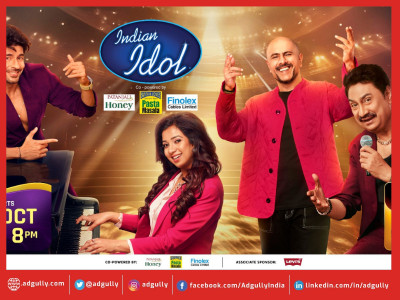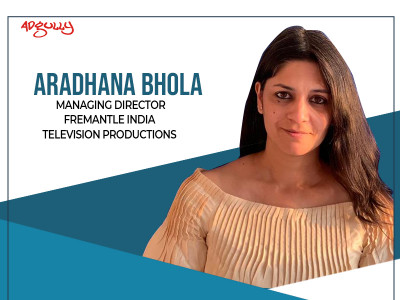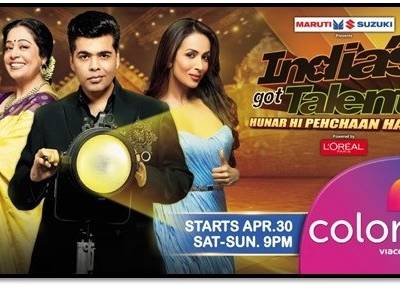9-16 age-group will lead the next big content growth: Ron Crasto
FremantleMedia saw considerable success for its first ever web-series – ‘Confessions: It’s Complicated’ – which was exclusively launched on Facebook, where it garnered 40 million hits by the finale of the show. Adding to the hits, 70,000 live interactions were seen with the cast of ‘Confessions’. The show, based on constant audience interaction, received 11.5 million views on Facebook.
‘Confessions’ is a story of three girls – Nupur Murthy, Sameera Saxena and Raka Ghosh, who move to Mumbai to pursue their dreams to make it big. The girls set out to explore various aspects of their lives and the show is a coming-of-age tale of these girls.
Commenting on the web-series, Ron Crasto, Senior Vice President, Branded Entertainment and Digital Partnership, FremantleMedia India, said, “86 per cent of ‘Confessions’ was watched on the mobile phone. The interactions of the fans with the stars came not just from the top six cities, but also cities like Lucknow, Surat, Jaipur, Indore, and Bhopal. The integrations of all the sponsor brands were seamless in the show and were followed through Facebook brand post and were engaging with the audience.”
In conversation with AdGully, Ron Crasto, speaks at length about the factors contributing to the success of ‘Confessions: It’s Complicated’, seamlessly weaving brands into the story plot, importance of audience interaction and more. Excerpts:
AdGully (AG): What was the thought behind the web-series ‘Confessions – It’s Complicated’? What kind of traction has it built up?
Ron Crasto (RC): What we noticed was that a lot of traffic and views were happening on YouTube. YouTube is basically now the baseline or the bodyline when it comes to doing any web-series. So, we figured out there are a lot of web shows and everything is going on YouTube. We also realised was how big Facebook’s growth is, with over 100 million active users, and they have a lot of broadcasters as well as content providers teaming up with them. So, we met up with the Facebook guys and told them that we were working on a web-series which would be very interactive, where the audiences can interact with the characters live. We are targeting viewers in the 18-25 age-group largely in the six metro cities to start with.
Each episode of the web-series, ‘Confessions – It’s Complicated’, is of 7 minutes duration. We decided to keep it at 7 minutes because following a deep dive research we noticed that 90 per cent of the Indian market has pre-paid connections. Most people buy data card for not more than Rs 200 or Rs 250, so people like to consume content for not more than 7-10 minutes a day, which includes watching videos, movie promos, etc., or they hang out at coffee shops where one can get free connectivity. Using this insight, we decided to come up with a show that is not more than 5-6 minutes long and introduced the element of interactivity.
So what we have done is that once the character goes off the screen, we pose a question on Facebook asking people to write their views on say, whether a particular character do the right thing or not. And people started interacting by stating – ‘Hey, she did a wrong thing’ or ‘She sould have done this’ and so on. Thus, the interaction starts to build up, and for the 10-week long show, we had over 68,000 interactions that happened between the characters and the consumers. This included nearly 3,000 interactions from boys, of which around 1,500 were just proposals! In terms of use, we clocked in approximately 11.4 million views. We reached nearly 40 million audiences and had a total of 55 million impressions.
We put this first on Facebook and took the risk. We told the marketers that we were putting first on Facebook and after 24 hours we would put it on YouTube. This was never tried anywhere in the world. And the beauty of this is that we also did a lot of brand interactions, where we ran contests on brands, we had meet and greet contests, we highlighted shows connected with the brands itself. For example, to highlight the integration with Tata Nano, we had shown one of the characters who wanted to buy a car. And we suggested why doesn’t she buy a Nano. So she said, “Dad is going to gift me a Nano, which colour should it be?” We turned this into a contest, asking people to suggest the colour of the car, and there were some winners as well. Thus, this kind of interaction with a brand worked well. But it was not forced and happened by default.
AG: Apart from Facebook, which other platforms have you used?
RC: We launched ‘Confessions’ first on Facebook as a platform and then later we put this on YouTube and Saavn. On Saavn, we put the highlights of the first three episodes of a week, wherein we showed what each character in the web-series said.
AG: We have seen that the content of web-series is mostly geared towards the youth TG...
RC: That’s right. In fact, to a larger extent the 18-25 age group. For them, mobile has become the first screen and TV, the second screen. So, they are actually saying no to television because they don’t want to watch saas-bahu kind of shows. They would rather watch web-series, because they speak in the same language, which is largely Hinglish. The issues and topics covered are something that they understand and so they become talking points for them. So any show related to web-series becomes a talking point for them. It becomes a social kind of engagement for them. The universe has now become smaller when it comes to digital.
AG: You have spoken about the 18-25 age-group being the key drivers, but have you also noticed a slightly younger TG for the web-series, say around 15 years?
RC: Yes. 10-11 years and 18 years are some of the biggest groups to make an entrance. Now what is also happening is that there is stronger parental control on what kids in the 10-15 or even 16 age-group watch. They get one to two hours on their iPads. So they will strictly filter it to watch, but they will watch. If TV is going on, they are not bothered. They will watch what they want to watch. Thus, the 9-16 age-group is going to lead the next big content growth in the future.
AG: What about brand integrations and implications for brands’ digital spends?
RC: Within the digital spends there are content spends. When we pitched the web-series to Myntra, which is the Presenting Sponsor of ‘Confessions’, they wanted to first understand the content, what the script was all about and where the brand fitted in the entire stream of stories. Today, marketers are looking at more seamless integrations, where the user who is consuming the content is a smart user. So, basically the story was woven around the brand and it was done very seamlessly. Apart from Myntra, we have P&G’s Gillette Venus as the Powered By Sponsor, along with Saavn as the Audio Partner and then we have Tata Nano.
AG: If you have to compare the investments made in the web-series vis-à-vis television, how much would that be?
RC: I wouldn’t want to compare with Hindi GECs, because that wouldn’t be right. But if I were to compare with music channels like, say, MTV, I think 40 per cent of the revenue is coming from these kinds of markets. So, the market is getting evolved, and people are paying that kind of money. If I were to give you a benchmark, Rs 1.8 crore to Rs 2.2 crore is the kind of investment happening on our shows and it could go up much more if you are an established player.












Share
Facebook
YouTube
Tweet
Twitter
LinkedIn